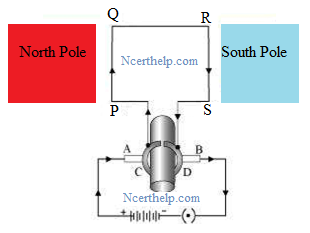Physic Lab Electric Motor Diagram
Explain the principle and working of an electric motor with the help of Schoolphysics ::welcome:: Lab motor electric solved familiarize diagram answer problem been has
A Cyberphysics Page
Lab motor electric familiarize assignment solved show Principle of electric motor, physics Electric motor
Q2 page 233
Motor principle illustrator electric motor model lab instrumentsNcert principle labelled Ncert electric class motor diagram labelled chapter solutions science motorsMotor lab electric experiment laboratory model instruments principle illustrator electrical tools equipment.
Motor electric principle coil plane physics paperNcert solutions, cbse sample papers and syllabus for class 9 to 12 Explain labelled cbse armature principle commutator answer rotating define vedantuNcert solutions for class 10 science chapter 13 magnetic effects of.

Hello there, this is a question about electric motor i needed help with
Electric motors – gcse physics (combined science) aqa revision – studyCitizendium brews Science education, science notes: electric motorMotor principle electric explain working energy diagram help mechanical converts device electrical into.
Omtex classes: science and technology diagram for ssc maharashtra stateCyberphysics coil Electric lab motorElectric motor physics gcse motors rule hand left write science aqa fleming asked bullet ensure points above works if combined.

Motor electric diagram physics dc simple motors model electricity made shows schoolphysics without search google experiment projects might course few
Schoolphysics ::welcome::Electric class motor 10th diagram magnetic ncert effects current solutions ch answer science principle Motor electric diagram working magnetic explain principle coil current neat construction class works rectangular force structure help answer passed whenMotor electric principle working.
Motor electric science project simple make fair build battery education projects physics working magnet kids coil experiments models cool experimentElectric motor lab A cyberphysics pageHow to build a motor.

Electric lab handpiece torque mega motor set el equipment vector
Motor electricElectric motors – gcse physics (combined science) aqa revision – study Solved this assignment will familiarize you with the physicsMotor electric schoolphysics gif.
Motor electric labelled draw diagram working principle explain itsSsc diagram technology science motor maharashtra state board Explain the working of electric motor with a neat diagramPhysics gcse experiment.

Electric motor
Electrical and electronic engineering forum: electric motors- principleElectric rule hand motors left motor fleming gcse physics aqa effect works edexcel science flemings ensure bullet asked points write Solved this assignment will familiarize you with theExplain the working of an electric motor with a neat diagram..
Ncert solutions for class 10th: ch 13 magnetic effects of electric .


Q2 Page 233 - What is the principle of an electric motor? - Teachoo

NCERT Solutions, CBSE Sample Papers and Syllabus for Class 9 to 12

NCERT Solutions for Class 10 Science Chapter 13 Magnetic Effects Of

OMTEX CLASSES: Science and Technology Diagram for SSC Maharashtra State

How To Build A Motor - GCSE Physics Experiment - YouTube

Electric Motor Lab - Physics 12 Portfolio Project

Electric Lab Motor - Tiger Supply Inc